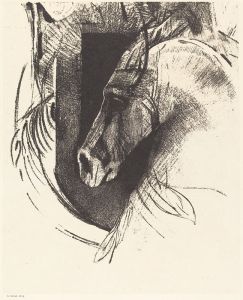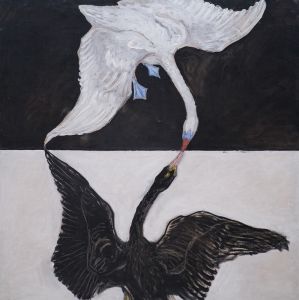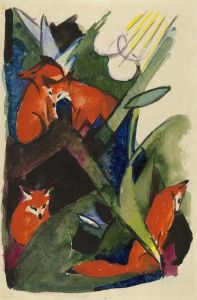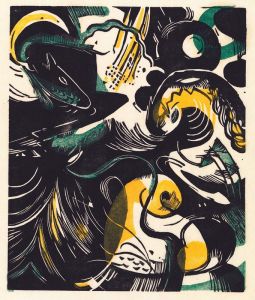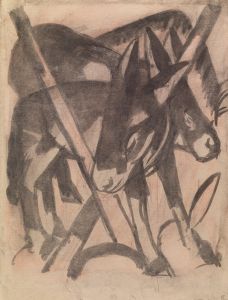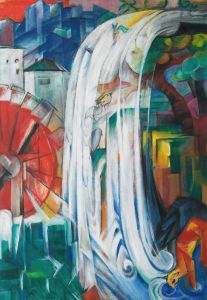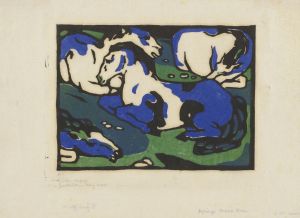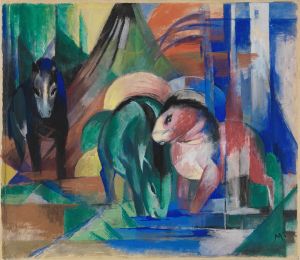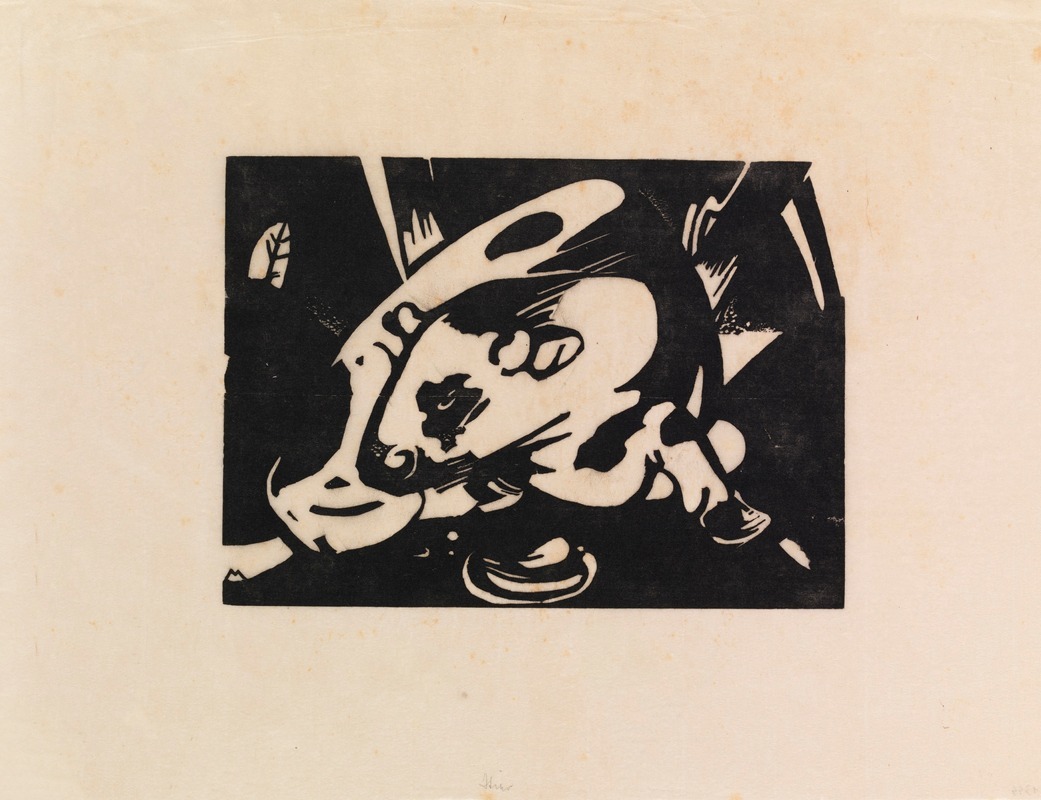
Bull
A hand-painted replica of Franz Marc’s masterpiece Bull, meticulously crafted by professional artists to capture the true essence of the original. Each piece is created with museum-quality canvas and rare mineral pigments, carefully painted by experienced artists with delicate brushstrokes and rich, layered colors to perfectly recreate the texture of the original artwork. Unlike machine-printed reproductions, this hand-painted version brings the painting to life, infused with the artist’s emotions and skill in every stroke. Whether for personal collection or home decoration, it instantly elevates the artistic atmosphere of any space.
Franz Marc was a German painter and printmaker, and one of the key figures of the German Expressionist movement. He was a founding member of Der Blaue Reiter (The Blue Rider), a group of artists that sought to express spiritual truths through their art. Marc is best known for his depictions of animals, which he believed to possess a spiritual harmony that was often lacking in humans. His works are characterized by bold colors, dynamic compositions, and an emotional intensity that reflects his philosophical and spiritual beliefs.
"Bull" by Franz Marc is one of his lesser-known works, and there is limited information available about this specific painting. However, Marc's approach to painting animals, including bulls, can be understood through his broader body of work and artistic philosophy. Marc often used animals as symbols of purity and innocence, contrasting them with the chaos and corruption he perceived in human society. His use of color was highly symbolic, with different hues representing various emotional and spiritual states.
In Marc's paintings, bulls might be depicted with vibrant colors and dynamic forms, emphasizing their strength and vitality. The use of color in Marc's work is not merely decorative but serves to convey deeper meanings and emotions. For example, blue often represented spirituality and peace, while red could signify violence or passion. This symbolic use of color is a hallmark of Marc's style and is evident in many of his animal paintings.
Marc's work was heavily influenced by his interest in philosophy, particularly the writings of Friedrich Nietzsche and theosophy. He believed that art should transcend the material world and express deeper spiritual truths. This belief is reflected in his depiction of animals, which he saw as embodying a more harmonious and spiritual existence than humans.
During his career, Marc produced numerous paintings of animals, including horses, deer, and bulls. These works are characterized by their bold use of color and form, as well as their emotional intensity. Marc's paintings often feature simplified forms and abstracted shapes, which serve to emphasize the spiritual and emotional qualities of his subjects.
Franz Marc's career was tragically cut short when he was killed in action during World War I in 1916. Despite his relatively short career, his work has had a lasting impact on the art world, and he is remembered as one of the leading figures of German Expressionism. His paintings continue to be celebrated for their vibrant colors, emotional depth, and spiritual resonance.
While specific details about the painting "Bull" are scarce, it can be appreciated within the context of Marc's broader artistic vision and his commitment to exploring the spiritual and emotional dimensions of the natural world through his art.






